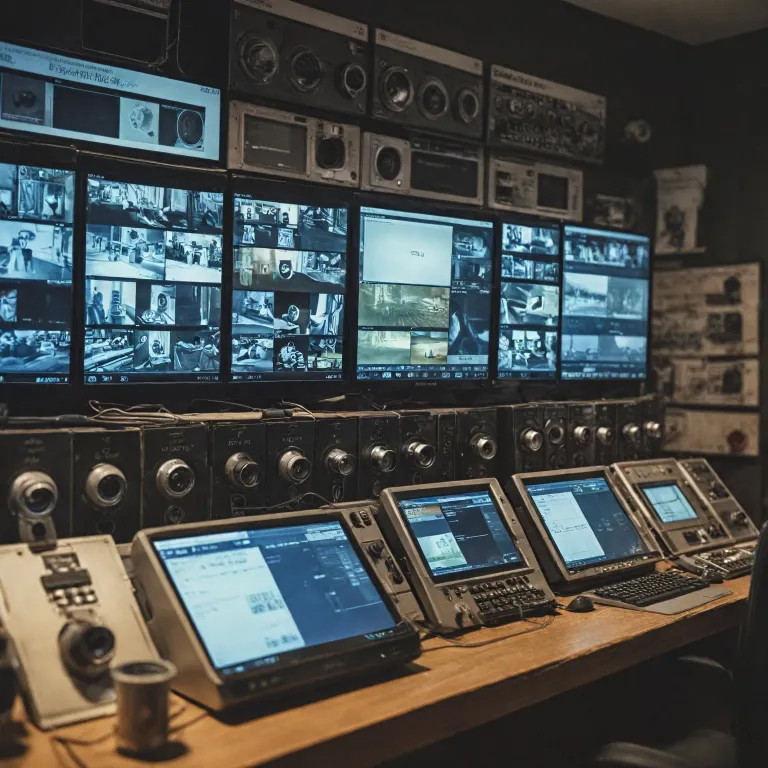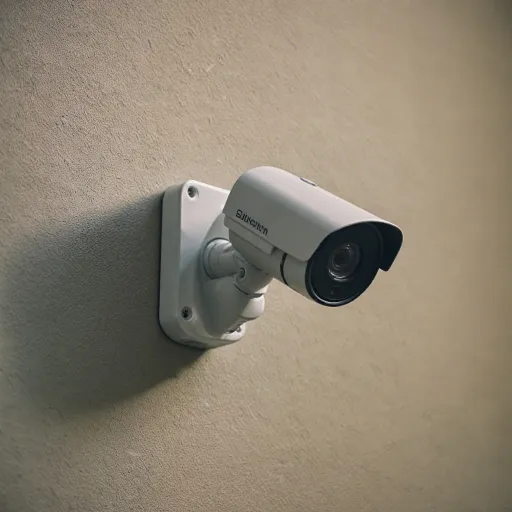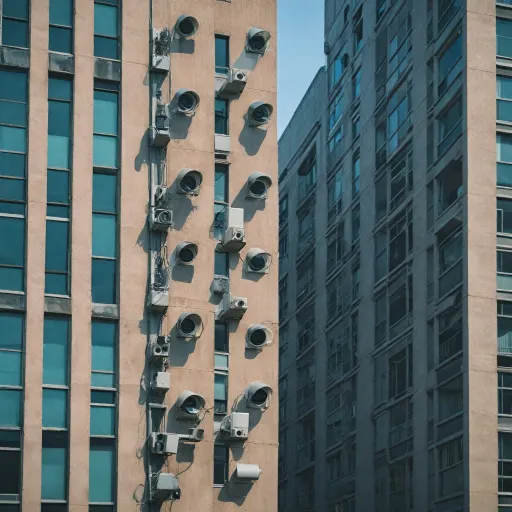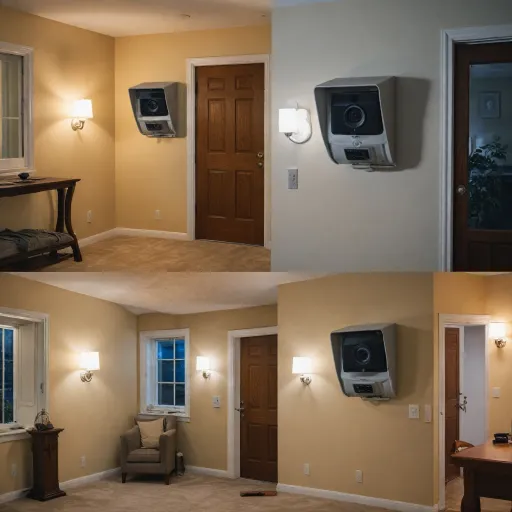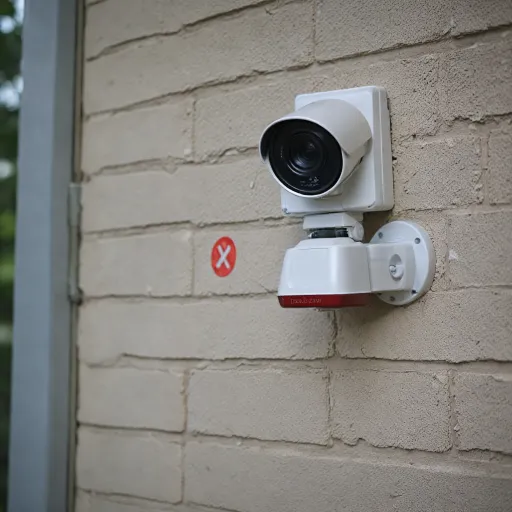
Factors Influencing Footage Retention
Identifying Major Influences on Footage Duration
The duration for which security cameras are able to retain footage is subject to several influential factors. Understanding these can help you optimize both the security and cost-efficiency of your camera systems.
Firstly, the type of storage solution plays a key role. Options range from local storage using in-system drives to expansive cloud storage platforms. Meanwhile, their storage capacity can greatly define the retention periods and space available. To explore more on local storage capacity, consider diving into this comprehensive guide on NVR hard drives.
The duration also depends on the quality of video recording. Higher resolutions will consume more storage space compared to lower resolutions. Furthermore, the choice of compression algorithms active in a system influences how long security systems can keep footage. Employing newer compression standards might maximize footage retention.
Moreover, your camera's operating settings, like motion activated recording, can substantially change how much data is stored. Motion-triggered systems only record when activity is detected, thus conserving storage significantly over systems that continuously record.
In the following sections, details on various storage options will be discussed. It’s crucial to assess these factors and customize your security camera settings accordingly to suit your specific needs. This process, alongside regular maintenance, ensures that your camera footage remains available for a longer retention period.
Types of Storage Solutions
Exploring Different Storage Options for Security Cameras
When considering the duration of security camera footage retention, the choice of storage solutions significantly impacts how long you can keep footage. Here’s a breakdown of the most common storage solutions available for security cameras, each offering unique advantages and limitations.- Local Storage:
- Cloud Storage:
- Hybrid Storage Systems:
Legal and Privacy Considerations
Legal Implications and Privacy in Security Camera Use
Understanding the retention of security camera footage isn't merely about technical capabilities, but also involves navigating the legal landscape and respecting privacy considerations. The duration for which footage is stored can be governed by local and national laws, and these laws vary widely depending on the jurisdiction. It's essential for camera system owners to be aware of these regulations to avoid legal repercussions. Privacy concerns often intersect with legal guidelines, focusing on how footage is kept and for how long. Individuals and organizations should strive to balance their security needs with respect for privacy rights. Ensuring systems are compliant with privacy standards can protect you legally and ethically. Moreover, when opting for cloud storage solutions, privacy impacts should be considered critically. Different storage service providers have varying policies concerning data access and retention, which can influence your decision on how and where to store footage. Understanding these aspects will help in selecting the right cloud service for your security infrastructure. In certain instances, legal mandates might specify minimum or maximum retention periods for footage. Businesses, for instance, might be required to retain footage for a set number of days. Ensuring your camera system settings align with these requirements can safeguard you from potential fines or legal disputes related to improper data handling. For more on how to enhance your home security with wise surveillance practices that respect both security needs and privacy constraints, you may explore comprehensive resources on enhancing home security with surveillance cameras and monitors. Keeping informed about the legal framework not only helps in maintaining lawful operations but also fosters trust and transparency with those under surveillance.Optimizing Storage for Longer Retention
Enhancing Storage Strategies for Extended Retention
Optimizing storage for retaining security camera footage longer involves a multifaceted approach, taking into account various important factors. Proper use of storage solutions directly impacts the retention period of your camera systems. Here’s how you can maximize the duration:
- Storage Capacity: Consider the storage space allocated for your video recorders. More capacity means more days of footage stored. This may involve upgrading your storage devices or choosing systems with larger built-in storage.
- Video Compression: Implement video compression technologies to reduce file sizes without compromising quality. Advanced compression can help retain footage longer by optimizing the available storage space.
- Resolution Adjustments: Adjust the resolution and frame rate settings of your security cameras. Lower resolutions and frame rates can extend storage duration, though it may impact video clarity.
- Cloud and Local Options: Balancing between cloud storage and local storage solutions can diversify how and where your footage is retained. Many modern systems use cloud services, but ensuring efficient use of local storage is equally crucial for reliable data access.
- Motion-Activated Recording: Set your camera system to record only when motion is detected to save on storage use. This setting helps keep footage significant to security incidents while discarding non-essential data.
- Regular Maintenance: Regularly maintaining and managing stored footage ensures that your data is not only accessible but also secure. Perform routine checks and updates to your systems to maintain optimal performance.
By addressing these aspects, you can effectively extend the number of days your security camera footage is retained and accessible, providing peace of mind and enhanced security coverage for your premises.
Choosing the Right Camera System
Evaluating the Right Camera System for Your Needs
Choosing the most fitting camera system is crucial when it comes to optimizing your home security setup for effective footage retention. With numerous options available, focusing on certain features can enormously impact your overall security and storage capabilities. Here are some essential factors to consider:- Storage Options: Analyze whether you prefer local storage solutions, like SD cards, or cloud storage. Local storage provides immediate access to camera footage but may have limited storage capacity. In contrast, cloud storage often offers a more extensive capacity, allowing you to keep footage for extended periods.
- Resolution and Compression: High-resolution cameras enable clearer video footage, but they also consume more storage space. Implementing efficient compression methods can help in maintaining video quality while optimizing storage space.
- Motion Detection and Recording Settings: Opt for systems with motion-activated recording settings. This feature allows the cameras to start recording only when motion is detected, thereby conserving both storage and security camera resources.
- Frame Rate Considerations: Different frame rates offer varying levels of video clarity. Higher frame rates provide smoother footage but require more space. Balance the need for clarity with storage requirements to choose an appropriate frame rate.
- Customizable Retention Policies: Some systems allow users to set specific retention periods, affording greater control over how long security footage is stored. This customization is beneficial for businesses or individuals with particular security needs.
Maintaining and Managing Stored Footage
Ensuring Longevity and Effective Management of Video Archives
Proper maintenance and management of your stored footage play an essential role in maximizing the security and efficiency of your camera systems. To keep footage effectively, several key areas require attention, ensuring no compromise on your security setup.
Regularly Review Retention Settings: Ensure that your camera system settings align with your desired retention periods. Adjusting retention preferences allows cameras to retain footage longer, avoiding unnecessary deletion. Regular checks can optimize storage capacities and prevent data loss.
Optimize Storage Space Utilization: Both cloud and local storage solutions each have limitations. To efficiently manage your storage space, consider employing data compression and motion-activated recording techniques. These not only prolong retention but also conserve storage capacity.
Ensure Security of Stored Data: Whether you store footage on cloud storage or local hard drives, securing your stored data is crucial. Implement data encryption methods to maintain privacy and prevent unauthorized access, enhancing overall security.
Conduct Routine Maintenance: Keep your systems in tip-top shape through routine maintenance. Regularly updating software ensures compatibility with new encryption protocols and enhances the security features of your existing setup.
Consider Professional Monitoring: Engaging with professional surveillance services can aid in managing your video archives effectively. These services often offer insights into optimizing your camera systems for long-term footage retention.
The right balance of proactive management and efficient storage solution choices directly impacts how effectively you can store and retrieve camera footage. By consistently focusing on these practices, you stand to benefit from an enhanced, robust security system.

